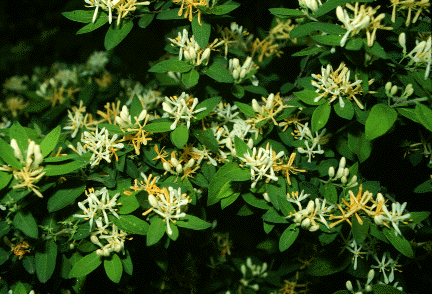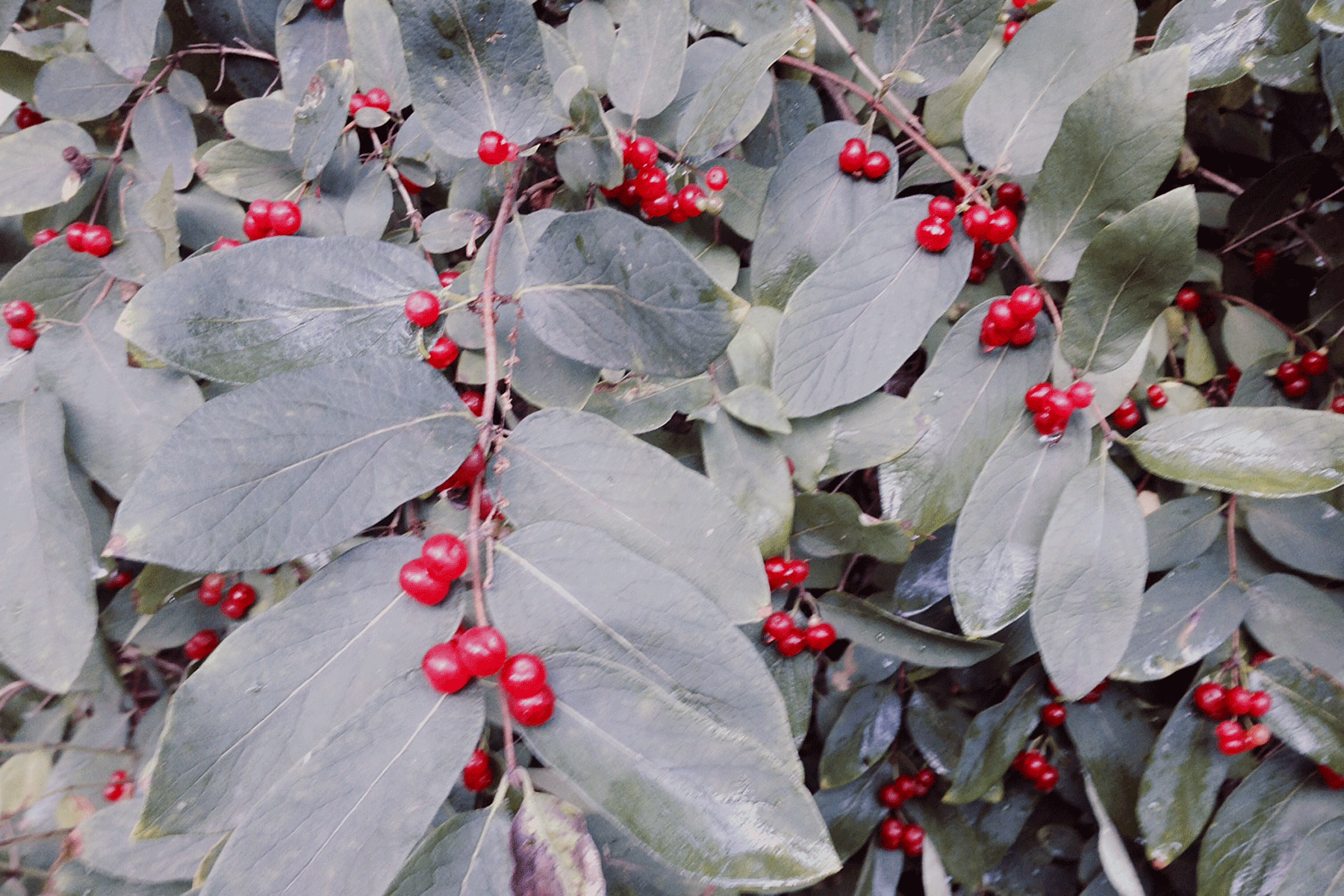

Bush Honeysuckles
Terry Bonace

Bush honeysuckles (Lonicera spp.) include up to three species and several different horticultural varieties of non-native shrubs that occur throughout woodlands and woodland edges in Beverly Shores. The plants are most distinctive in summer through early winter when their red or orange berries, appearing in pairs along the stem, are ripe. In the springtime they have an asymmetrical, tubular flower most commonly white or yellow and often quite fragrant. Leaves and flowers also appear in pairs along the stems. Bush honeysuckles are among the first shrubs to leaf out in the spring and the last to lose their leaves in the fall.

Bush honeysuckles were initially introduced to the United States from Asia as ornamentals in the 1800s. In the 1950s through 1970s, the planting of bush honeysuckles was encouraged by government agencies for wildlife food and cover (a mistake repeated with many plants to be discussed in future articles, including multiflora rose and Russian olive) and to prevent erosion. Ironically, bush honeysuckles are now found to have less nutritional value than native shrub berries. In spite of this, the seeds have been widely disseminated by birds and small mammals and bush honeysuckles are a problem in the management of many natural areas in most of the eastern and Midwestern United States. These honeysuckles spread rapidly and form a dense understory thicket, choking out and preventing the growth of native plants. They also produce a chemical that inhibits the growth of native plants (in a similar fashion to tree of heaven) in their vicinity.
Bush honeysuckles may involve some effort to control. When the plants are small, they can often simply be pulled out of the ground by the roots. But larger shrubs may need to be treated with an herbicide containing glyphosate, like “Roundup.” Either the whole shrub can be sprayed on the foliage or the bush can be cut to the ground and the stumps treated with glyphosate. The latter is the most successful method. In all cases when using herbicides and other pesticides, be sure to follow the label directions carefully. When disposing of plants with fruit on them, place them in garbage bags with the rest of your garbage to prevent the seeds from spreading further.
Native Plants as Alternatives to Bush Honeysuckles
Bush honeysuckles are aggressive and undesirable invaders, but they do have some desirable characteristics for landscaping, particularly their berries and flowers, which birds and butterflies find attractive. Fortunately, there are a number of native plants that can provide similar benefits. For a list, click here:
Because there are many native shrubs and small trees with fruit and berries, if you need help to identify bush honeysuckles on your property, the Environmental Restoration Group (ERG) will be glad to help identify the plant for you. Don't hesitate to contact Terry Bonace (tbonace@gmail.com), Hans Lagoni (hlagoni@comcast.net ) or Bill Schaudt (blschaudt2@gmail.com) for assistance.